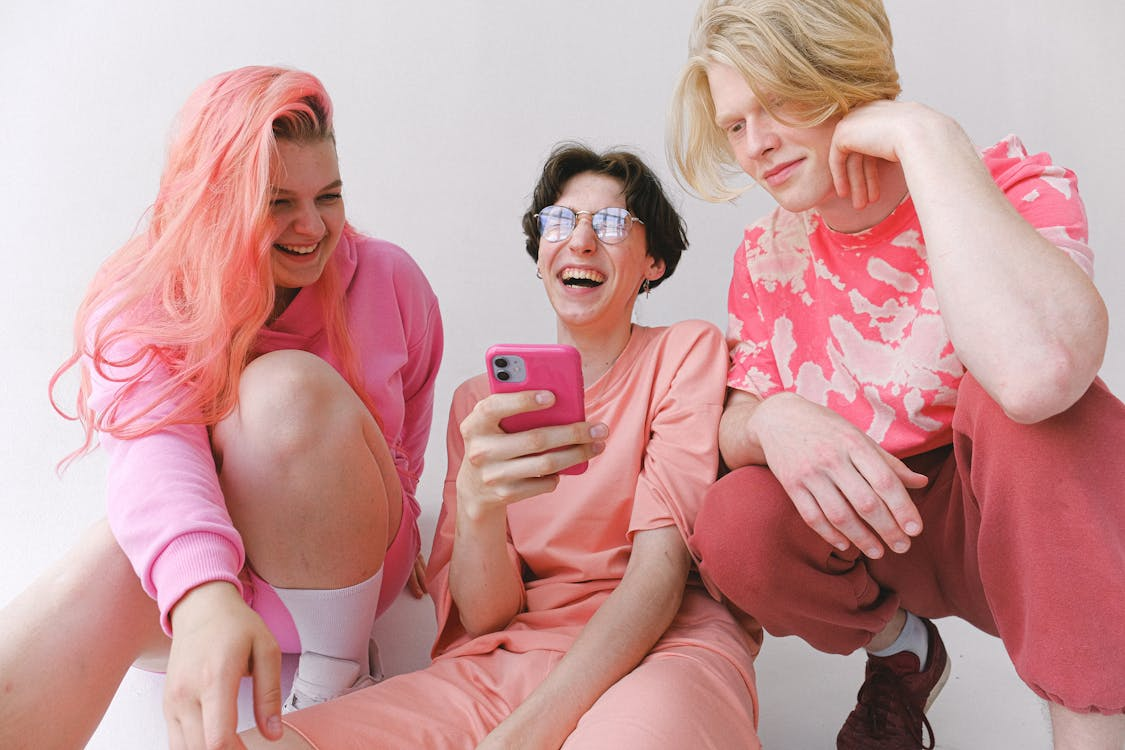In a world so PC, so misbehaved and so unpredictable, a world where comedians and reality TV stars become world leader and mothers don’t believe in vaccinating their children, I find that we have arrived at the front door of the beloved quirky Vice media and have had the welcome rug pulled from under our feet.
Vice media, in the beginning, was unique, bold and a refreshing concept. It had a bite and it was provocative. It narrated the movements of cyberspace against the institution and for the people and it narrated it well. It was the zeitgeist of all things anti-fashion, anti-media and anti-society. Vice media quickly became a channel for the millennium, for you could read about drinking and drugging while reading about George Bush and it was a safe place. For it was the new way of media criticism. It was about culture and it was cool. It was founded in 1994 by Suroosh Alvi, Shane Smith, and Gavin McInnes. Now it’s’ made of a range of investors from The Walt Disney Company, A&E Networks, and Twentieth Century Fox.
I asked others what they thought of Vice. I felt like my feelings towards Vice made me look like an angry child. My first indication that Vice Media was losing its Messiah impression was when I interviewed Nimrod Kramer, former Vice writer and Gonzo journalist. “Vice is like ISIS,” Kramer said. “Vice is going down! Rupert Murdoch owns 5%, and they will send more to him. His son is on the board. People don’t like that they portray themselves as this millennial thing then take money from Murdoch. I prefer the Onion. Vice will never challenge say Adidas, it is not real journalism.”
“Vice Media is a riddle, wrapped in a mystery, inside an enigma to paraphrase Winston Churchill commenting on Russia in 1939. From hipster to part of the largest most effective disinformation organization [Murdoch] in the world,” Steve Oklyn of NOT VOGUE, the mysterious fashion and media critic who studies plenty of cultural theory and art, said.

In 2013, Vice Media sold parts of itself to Rupert Murdoch’s 21st Century Fox Media Corp. for $70 million. As far as its’ independence goes, and being that ‘for the people’ outlet, Vice’s independence died that day. It’s hard not to object or understand such happenings for I would sell every project I have ever done for a quarter of what Vice got, but my disappointment stems from what Vice became when it received its corporate crown and the taste that it has left in my mouth.
The Murdochs of the world saw potential in this rise in ‘ANTI’ everything treated it like a trend to be cashed in on. Similarly to the article in the Economist about pop singer Billie Eilish being ‘a focus-grouped, committee-driven idea of today’s pop’ (popular culture specifically) and how the ‘being depressed’ became capitalized in the pop industry after researching what millennials were discussing on social media.
This was the first time that counterculture and capital criticism became a selling point to the mainstream media and its third party, along with other industries who saw this as a trend to be marketed, the group invested major money into this media mogul called Vice, and this was the start of the Vice Shock Doctrine. A movement you, like me, think you’ll stand behind until you’ve realized that you’ve fallen into a trap. Even after reading Marshall McLuhan’s media theory, I still fell for Vice. I still thought that it’s analysis was unbiased (well as unbiased as things can really get this day & age) and for my generation. But with these most recent headlines and happenings, I feel like Vice does not cater nor represent us millennials, but exploits us. It does the complete opposite of what it preaches.
My first finding is the way in which Vice treats women. “Vice has always displayed a disregard for women,” Oklyn said. There is the explosive sexual harassment scandal within the company itself that led to the company suspending two top executives in an attempt to brush the scandal under the rug. More recently there are plenty of accusations that Vice does not pay female staff merely as much as they do their male staff.

“Vice Media might be a rapidly sinking ship,” writes Julie Zerbo of the Fashion Law in February 2018 in a story titled, “Vice Media Sued for Systematically Paying Female Employees Less Than Male Counterparts.” A story that came from the New York Times revealed in December 2017 that Vice, i-D, Noisey and other outlets were patrons of ‘ugly corporate culture.’ The Times revealed four specific settlements involving sexual harassment allegations and defamation against Vice employees, shortly after the company announced that chief digital officer, Mike Germano would not be returning to the company.
Two months after that NYT story, a Wall Street Journal story reported that Vice missed its revenue target in 2017 by more than $100 million. Then came a new lawsuit about equal pay. Elizabeth Rose worked at Vice in management from 2014-2016 and filed a lawsuit against the media mogul alleging that it engages in pay discrimination against female staffers. According to Zerbo, a lawyer in New York who specifically looked at the Elizabeth Rose v., Vice Media Inc., et al, BC693688, Superior Court of California (Los Angeles) case, Rose accused Vice of violating the Federal Equal Pay Act. The complaint details that male subordinates she hired made about $25,000 more per year then she did. After reviewing internal memos, Rose found that a lot of female employees at Vice were being paid less than their male counterparts and that they were aware. This lawsuit will give other Vice employees the opportunity to share the monetary damages. Zerbo writes that Rose described, “That class of ‘similarly situated’ individuals include ‘hundreds of employees’ subjected to Vice Media’s “systematic, company-wide, unlawful treatment.”
Vice discretely ended the ugly lawsuit with Rose this year and paid $2 million to settle against the systematic pay discrimination accusations. Almost 700 female current and former employees from Vice are eligible to share the settlement sum. This is significantly less than $7,000,000-9,740,000 which is a figure an expert from the court of law determined to be the full amount of underpaid wages to the female staff of Vice. Zerbo writes, “Of the near $2 million sum, $650,000 is earmarked for lawyers, $15,000 is going to service fees. The average payout that each woman will actually recover is expected to be about $1,600 (minus taxes).”
My second problem is about vaping. Vice Media entered into a $6.5 million deal with Philip Morris International, to ‘promote e-cigarettes’ to their 18+ audience according to the Financial Times in March. The report detailed how Vice has agreed to produce sponsored content endorsing e-cigarettes – amid global concern, an attempt to clamp down on cigarette advertising of any kind. Despite Vice reporting on the uncanny concept of vaping amongst teens, calling it ‘embarrassing’, Vice is suddenly endorsing vaping. The worst part of this endorsement and report is that a spokesperson for Vice stated to the FT that the mission behind this deal is to ‘quit cigarettes.’
It is a known fact that cigarette endorsing is completely illegal. So, these Vice vaping adds quintessentially are not competing or replacing any sort of ‘unhealthier’ or ‘deadlier’ option. There were no cigarette ads in publications targeted to teens, to begin with. When cigarettes themselves first came on the market, it was the capital and the lack of morals that snowballed smoking into a public health concern. Doctors, athletes, movie starts – no one knew the reality of smoking until it was too late. I’d like to think in this generation however it is not too late. I would like to think that Vice Media is not trying to kill me and my friends. I tried to reach out to Vice, but I didn’t get much response. I decided that I wanted to talk to Philip Morris about this hypocritical dangerous mess instead. My question was simple really, is this really happening?
Philip Morris wrote to me:
“We do have applications pending before the FDA seeking authorization to commercialize our heated tobacco product, IQOS, in the U.S. With respect to Vice, which has only been launched in the UK, the Quit Cigarettes” mission by Vice’s “Change Incorporated” fits squarely within PMI’s commitment to creating a smoke-free future. PMI’s objective is to switch our business completely out of combustible cigarettes to products that do not burn or do not contain tobacco. We first announced our smoke-free future in January 2017. Vice’s “Change Incorporated” will deliver editorially-independent content, which we believe is uniquely positioned to encourage adult smokers to quit and make the best possible choices for their lives.”
“To be clear, No PMI (or competitive) products or brands will be advertised or promoted within the content. This project is about helping people quit cigarettes. That is the only measure of success. VICE/Change Incorporated will retain full creative and editorial control over the content they produce as part of this initiative. All Quit Cigarettes content will acknowledge funding from PMI.”
‘Success’ and ‘Change Incorporated’ sounded a bit off-putting and questionable. However, I did not feel like being sued by Philip Morris or challenging them at all really given their power over mine so I retreated. I knew the facts. I knew that smoking rates have hit an all-time low (even in the UK), however, I knew that it was the younger crowds who vaped without any knowledge to its’ effects on your health. I knew that most kids who vaped were not people who have smoked for years who were trying to quit, but kids who picked up a new normalised habit. I knew that vaping increases the likelihood of smoking cigarettes. All a habit in which Vice will now permit, or promote as healthy.
“Just research Shane Smith’s personal real estate portfolio and my answer to this question becomes evident. Shane also seems to have a gambling addiction. Gavin McInnes is an alt-right propagandist,” Oklyn said regarding the matter.
Frustration with political correctness and trying to make everyone equal has become pessimistic. The capitalist system has become such a normalized concept that we cannot even recognize it and we use it to replace our morals with our needs. In design, creation and criticism we are so engulfed by it. The interesting nature of Vice and its uncanny ability to cater to young people and dominate at doing so is the question of whether or not this is a reflection of the Times in which we find ourselves. How is Vice able to pull this off?
The answer may just be as simple as supply and demand. We demand PC friendly, edgy, anti-everything quick fixes in all aspects of our lives. We are millennials, we love Smartphones, MacBook’s, Nike, sushi takeout and $10 dollar drinks at mediocre nightclubs. Our generation isn’t putting away their money for things like mortgages anymore– this is a known fact. The issue lies within, as our current culture has such easy access and entitlement to be marketed to, mainly because there is a luge lack of education and understanding why we see what we see, why we read what we read and where it all comes from.
Featured Image from: Bustle.com




